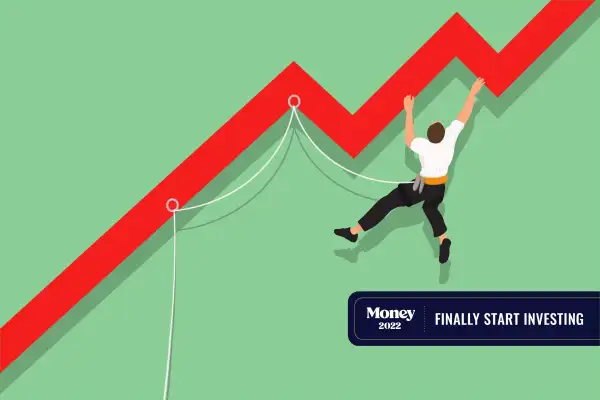Watch Out: These High-Risk Investments Will Be All the Rage in 2022
Money is not a client of any investment adviser featured on this page. The information provided on this page is for educational purposes only and is not intended as investment advice. Money does not offer advisory services.

This article is part of Money's January 2022 digital cover, which features 22 ways to make 2022 the best money year of your life. Browse all 22 articles here.
For every investor profiting off a business poised to become the Next Big Thing, there are countless others getting burned by SquidGame digital tokens, fake Elon Musk Twitter accounts or another wannabe high-flyer that either implodes or turns out to be a scam.
Some of the most popular investment opportunities around exist in the worlds of cryptocurrency and decentralized finance (DeFi). But creators have run into a major stumbling block on the path to profitability: When pretty much anyone can pitch in on building new digital infrastructure, there’s a good chance that some of those participants will inadvertently (or deliberately) mess things up.
As we head into 2022, here are the high-risk investing trends that people will be talking about non-stop, and what you need to know about each of them.
NFT flipping
NFTs, or non-fungible tokens, are unique digital assets that are linked to a blockchain. To date, most NFT activity — and the fortunes it has made — has been through digital art or the authentication of brick-and-mortar (or pen and paper, or paint and canvas) works.
Flipping NFTs works the same way as it does for tangible assets. The goal is to find NFTs that are cheap and likely to increase in value; i.e., "buy low and sell high." The relative newness of NFTs as an asset class (the concept has been around for nearly a decade, but really took off in 2021) and the eagerness with which some buyers are pouring money into it, could make NFT flipping look like an attractive speculative play. And profits can be sizable: Two business partners, the founder and executive vice president of South Korea's biggest cryptocurrency exchange, became the country's first crypto billionaires in November.
Much like picking stocks, though, making money off of NFTs requires having some background knowledge of the trends driving their popularity. Would-be flippers will want to consider factors like scarcity (just like a photographer can do a limited run of, say, 10 signed prints, an NFT creator can do the same in the digital sphere), starting price and resale value.
As always, never sink more money than you can afford to lose into speculative investments — NFTs or otherwise.
Coin staking
The Bitcoin blockchain, a digital ledger that keeps a record of the asset's transaction history, is authenticated by a computing process called “proof of work,” which—in a nutshell—prevents people from trying to spend the same digital coin more than once.
But some newer cryptocurrencies have adopted a different method called “proof of stake,” which requires users to contribute some of their own cryptocurrency as collateral. If a block of cryptocurrency is created successfully, the user earns a reward for their "stake."
The closest real-world financial analogy might be a traditional savings account — in which account holders earn interest for letting their bank use deposited funds.
Like interest-bearing deposits, coin staking is considered a passive investment — the crypto stake accrues without the user making any active trades. Unlike a bank account balance—which is tendered in dollars and backed by the F.D.I.C.—the volatility of cryptocurrency and its potential to lose value quickly makes coin staking a pretty risky endeavor.
Yield farming
Yield farming is similar to coin staking, in that it's a passive way for crypto holders to add value to their assets without having to trade them. But there are some key distinctions investors should be aware of.
While coin staking exists to facilitate the creation of new cryptocurrencies, yield farming exists to provide liquidity within the realm of decentralized finance. Again, this has a rough analog in the conventional financial space: Aspiring yield farmers facilitate transactions like buying, selling and trading of crypto assets much like banks use deposited funds to finance other their other activities.
Investors who want to get into yield farming also face risks similar to coin staking when it comes to volatility and potential losses on their principal investment. They also need to be familiar with the ins and outs of automated market makers, the protocols that power DeFi platforms.
"Yield farming is not much different than buying high-dividend paying stocks or high-yield unsecured debt or bonds,” billionaire investor (and "active yield farmer") Mark Cuban recently told the Wall Street Journal.
And Cuban should know: Last summer, he lost an undisclosed amount of money when a digital currency in which he was earning yield crashed and burned.
More from Money:
5 Crypto Buzzwords Everyone Should Know in 2022
From Pet Nanny to Metaverse Real Estate Agent, These Side Hustles Scream '2022'
